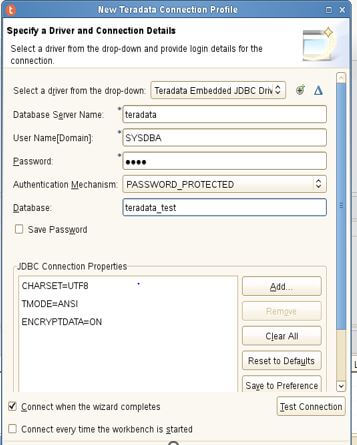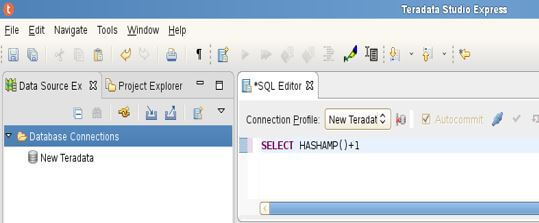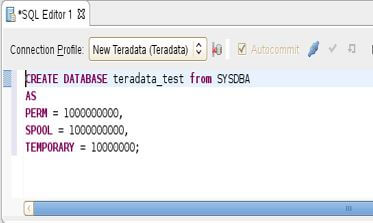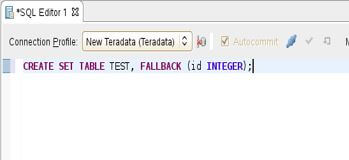Teradata Tutorial
Home Data Science Data Science Tutorials Teradata Tutorial
Basic
Definition of the Teradata Tutorial
Teradata tutorial provides a brief description of topics related to teradata. It is a popular RDBMS system that handles large-scale data analytics and data warehousing. This is a structured guide that provides step-by-step points that explains why we need to use teradata for analytics and data warehousing purposes. Teradata is capable to handle a large volume of data also it is a highly scalable and open processing system.
Overviews of Teradata Tutorial
The teradata tutorial is a comprehensive guide that covers multiple aspects of teradata. We can run teradata on windows, Linux, and UNIX server platforms. The teradata tools support multiple data warehouse operations at the same time with different clients. The teradata tutorial will cover the definition of the teradata tutorial, overviews of the teradata tutorial, why need to learn the teradata tutorial, teradata applications, teradata examples, prerequisites, and target audience.
This software is developed by Teradata organization. The system of teradata is highly scalable and linear, it handles a large volume of data at the same time. We can scale the teradata up to 2048 nodes. The teradata architecture is based on parallel processing that divides large volumes of data into small processes. The optimizer of teradata is advanced and it handles 64 joins in a single query.
Why do we need to learn Teradata Tutorial?
There are multiple reasons to learn the teradata tutorial. The below reason shows why we are required to learn the teradata tutorial as follows.
- High performance in data warehousing: The Teradata is mainly designed to handle large volumes of data. Learning the teradata can enable us to work with a large volume of data efficiently.
- Better data management: To learn the teradata enables us to effectively manage and store data that is crucial for business decision-making.
- Demand in the industry: Teradata is widely used in multiple industries such as telecom, healthcare, retail, and finance. Teradata enhances career opportunities in the industry.
- Integrate with other tools: Teradata integrates with multiple tools and technologies such as Spark and Hadoop. While learning Teradata we can integrate it with other technologies and tools.
- Improved analytics: Teradata provides multiple analytical functions used to gain insights from the data. We can use those functions to perform the analytics and also generate valuable insights.
While learning teradata will improve our analytical and data management skills and also it will boost our career opportunities.
Applications
Teradata is used in multiple industries such as finance, healthcare, and many more. Below are the applications of Teradata as follows.
- Data Warehousing: Teradata is mainly used in data warehousing, which involves the process of storing, collecting, and managing a large volume of data which is critical for making decisions.
- Predictive Analytics: Teradata provides the capability of predictive analysis which enable the business to identify the trends and patterns in data, which helps to make predictions about future events. This is useful in industries such as finance and healthcare.
- Business Intelligence: Teradata provides a range of tools that are used in business intelligence and functions such as reporting and data visualization that enable us to gain insights from the data. This insight helps businesses make decisions and improve their performance.
- Supply chain management (SCM): Teradata is used to manage the SCM data, such as shipping and inventory data. While analyzing this data we can optimize the process of the supply chain and it will reduce the cost.
- Scalability: Teradata is highly scalable and it will be handling large volumes of data. This means our business easily expands its analytics and warehousing capabilities.
- High Performance: Teradata is designed for analytics and high performance.
- Customer relationship management (CRM): Teradata is used to improve customer relationships by providing insights into customer behavior and preferences. This is helpful in our business to retain customer loyalty.
Example
Below are examples of Teradata databases as follows. Below we have defined multiple examples of Teradata as follows.
- In the first example, we are connecting to the Teradata database as follows.
- In the below example, we have defined the number of AMP from the Teradata database as follows.
Select HASHAMP() + 1;- In this example, we are creating the database in the Teradata database. We have created the database name as teradata_test.
CREATE DATABASE teradata_test from SYSDBA
AS
PERM = 1000000000,
SPOOL = 1000000000,
TEMPORARY = 10000000;- In the below example, we are creating the table. Below we have created the table name as a test as follows.
CREATE SET TABLE TEST, FALLBACK (id INTEGER);- In the below example, we are creating the table with the primary key. Below we have created the table name test1 as follows.
CREATE SET TABLE TEST1, FALLBACK (id INTEGER) UNIQUE PRIMARY INDEX (id);Pre-requisites
To start with the Teradata tutorial, it is recommended to have an understanding of the below concepts as follows.
- Basic concept of database: Basic concepts of the database are also required to work with Teradata. We required a basic understanding of the concept of keys, relationships, indexes, and other database concepts.
- Programming languages: Knowledge of programming language is important while working with teradata. We have required knowledge of python and java.
- SQL Queries: We also required knowledge of SQL queries like select, update, delete, insert, join, and other SQL queries.
- Data warehousing concept: To understand the concept of a data warehouse like fact tables, dimensional modeling, and table will help us while working with Teradata.
- Architecture of Teradata: To understand the architecture of teradata is important while working on teradata. It includes disk storage, BYNET, a parsing engine, and access module processors.
Target Audience
The target audience of the Teradata tutorial is who are interested to learn Teradata for a large volume of data management. Below is the target audience of the talend tutorial as follows.
- Data scientists and engineer who wants to work with Teradata for data mining, processing, and ML.
- A business analyst who wants to create reports, visualization, and dashboards by using Teradata.
- It is also useful for students and IT professionals who want to learn the architecture, data administration, installation, and configuration of Teradata.
- This tutorial is helpful for database developers who looking to work with Teradata and want to learn the language of TSQL.
- It is also helpful for data analysts who want to work with large datasets and needs to extract insights from large datasets using Teradata.
Conclusion
The teradata tutorial is useful for everyone who looking to learn about teradata DBMS. It is a powerful data warehouse solution that handles a large amount of data and also enables efficient data analysis and reporting. In this tutorial, we have covered multiple topics of teradata. We have provided a detailed understanding of teradata, so it is helpful for students as well as IT professionals.
Let’s Get Started
By signing up, you agree to our Terms of Use and Privacy Policy.
Let’s Get Started
By signing up, you agree to our Terms of Use and Privacy Policy.


Watch our Demo Courses and Videos
Valuation, Hadoop, Excel, Web Development & many more.


EDUCBA Login
This website or its third-party tools use cookies, which are necessary to its functioning and required to achieve the purposes illustrated in the cookie policy. By closing this banner, scrolling this page, clicking a link or continuing to browse otherwise, you agree to our Privacy Policy





